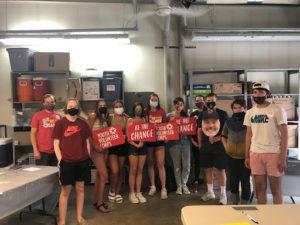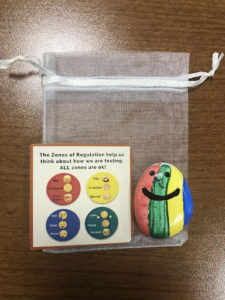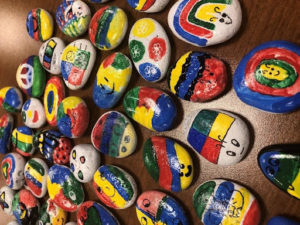Coming Full Circle with Service by Nathan Stahley
In 2007 I was offered an internship at United Way of Yellowstone County in Billings Montana. I was an undergraduate student unsure of what path I might take professionally. A year later, I graduated with a degree in Business Management, what seemed like a “safe” degree for my uncertain future. Luckily, I was hired on staff at United Way, helping launch and coordinate their Youth Volunteer Corps Program (YVC), a community-wide service learning club for youth ages 11-18. It was a perfect start to my professional journey, and it taught me a lot about how important giving back to your community is. Fast forward fourteen years and I am fortunate to find myself back working alongside United Way staff, this time as an AmeriCorps VISTA Summer associate.
 The opportunity to revisit a program and organization that impacted me during a critical time in my life has been a true blessing. As a University of Montana Master of Social Work student on summer break with several years of previous work experience, I felt primed to help bring the Youth Volunteer Corps program back online coming out of COVID-19.
The opportunity to revisit a program and organization that impacted me during a critical time in my life has been a true blessing. As a University of Montana Master of Social Work student on summer break with several years of previous work experience, I felt primed to help bring the Youth Volunteer Corps program back online coming out of COVID-19.
During my short time on the team I have enjoyed measurable success. Behind the scenes several processes for how the program operates have been reviewed and updated. Everything from how we recruit youth participants to how we plan service-learning projects have been examined. The YVC website was completely rebuilt and a new site was launched allowing web based project sign up which has made project recruitment smoother.
In addition to various sustainability efforts accomplished behind the scenes, I have been able to plan and implement a handful of service-learning projects as well. A unique partnership with a local elementary school is one noteworthy collaboration.
Through various meetings, it was identified that YVC could help to reinforce this elementary school’s teaching of the Zones of Regulation curriculum. This framework is used to help elementary age students identify and manage their emotions at school and at home. The four zones are visualized through the colors red, yellow, green and blue and each represents a state of thought and emotion. Children learn that each zone is OK and the goal is to be able to recognize when they are becoming dysregulated (moving out of the green Zone) and then attempt to apply skills to get themselves back to their ideal functioning state.
 To reinforce these learnings a YVC project was developed. Eleven recruited 11-18 year old participant’s learned about the different zones and how all of us get dysregulated at times. After the learning, we provided service by painting “pebble pals” featuring the four zone colors along with smiling faces and other artistic features. The pebbles were then distributed by the principal of the elementary school to elementary students in need of a “pal” to go in their pocket or desk. Similar to a worry stone, these small rocks offer a way to calm down and by painting the four colors we were able to reinforce the Zones of Regulation curriculum. This was helpful for the school staff teaching this concept during summer school.
To reinforce these learnings a YVC project was developed. Eleven recruited 11-18 year old participant’s learned about the different zones and how all of us get dysregulated at times. After the learning, we provided service by painting “pebble pals” featuring the four zone colors along with smiling faces and other artistic features. The pebbles were then distributed by the principal of the elementary school to elementary students in need of a “pal” to go in their pocket or desk. Similar to a worry stone, these small rocks offer a way to calm down and by painting the four colors we were able to reinforce the Zones of Regulation curriculum. This was helpful for the school staff teaching this concept during summer school.
This is one example of how I was able to apply a social work lens and find tremendous value in my short summer term of service. Through a combination of capacity building and direct service I am confident the YVC program has been kick-started and primed for continued success. As I head back to the University of Montana to finish my MSW, I have no doubt I have gained useful experience in areas of team building and communication among other. It has been a pleasure to give back to a program I helped start and to work alongside a former colleague and professional mentor who I respect. I look forward to continuing to find ways to engage with my community and help others across the state of Montana as my future unfolds.
 Blog Posts
Blog Posts